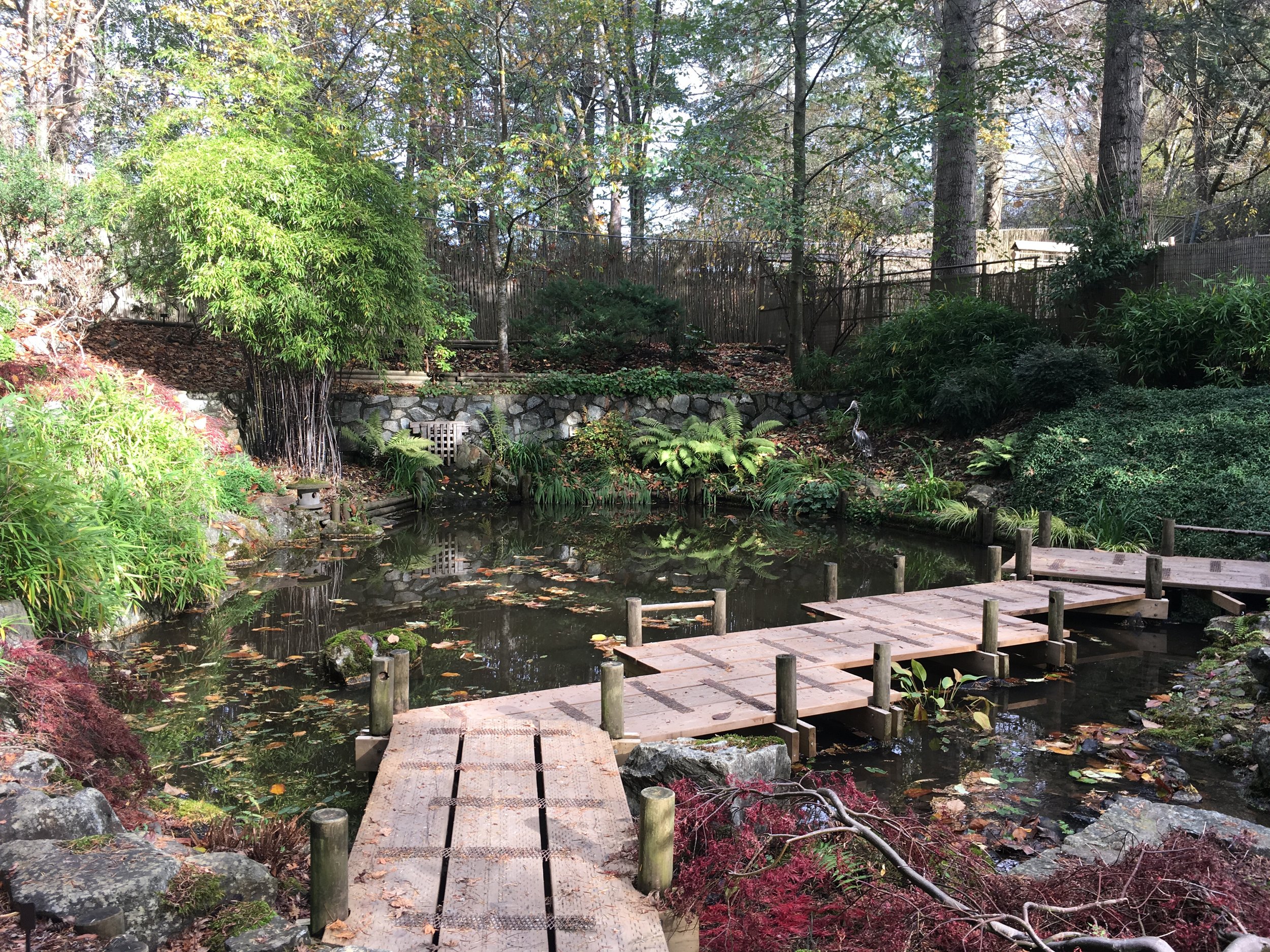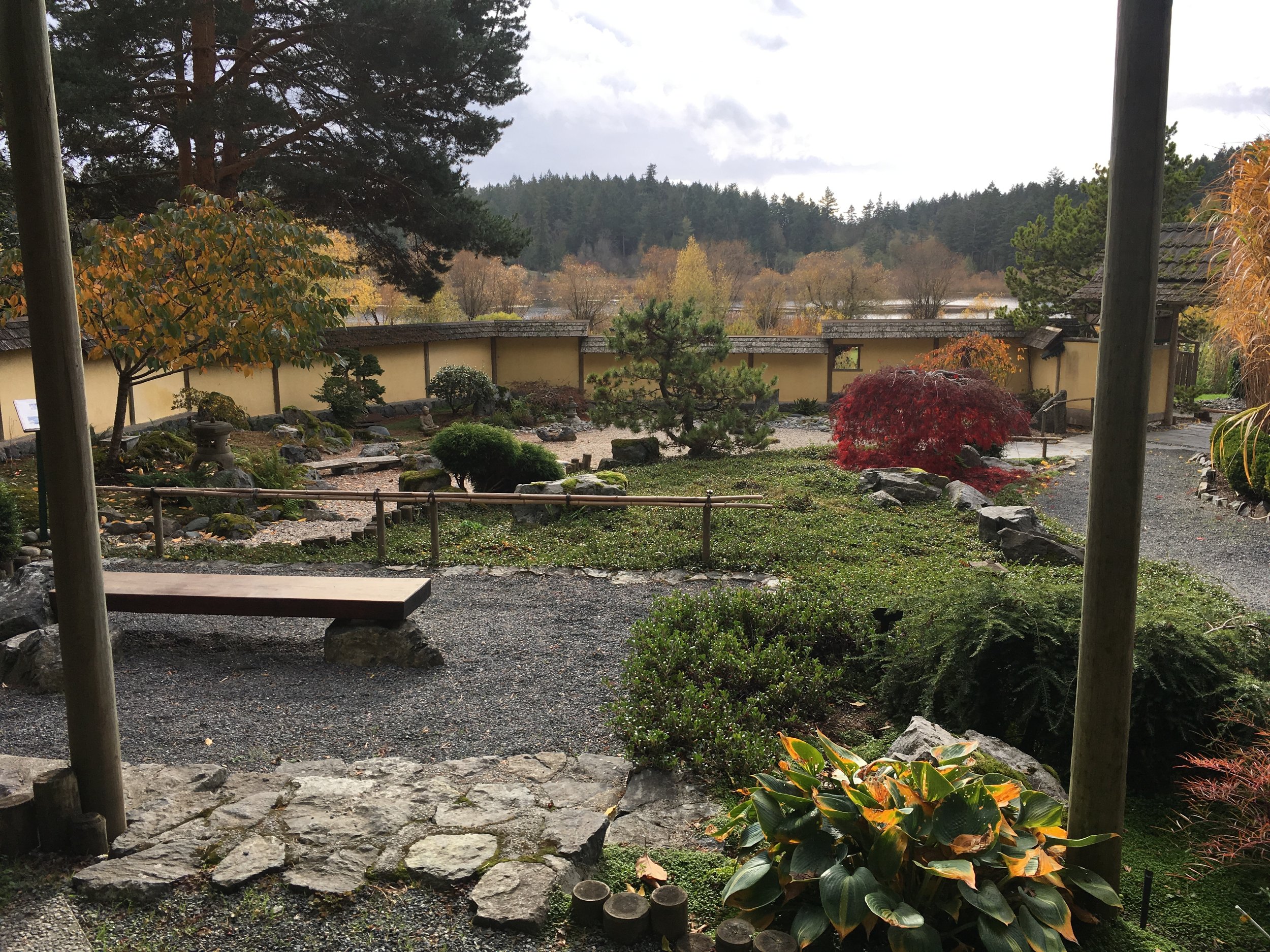Exploring the Tranquil Beauty of Takata Japanese Garden on Vancouver Island
An Authentic Stroll Garden Experience at the Horticulture Centre of the Pacific
Vancouver Island is home to some of the most authentic Japanese gardens outside Japan, and the Takata Japanese and Zen Garden is a prime example. Located at the Horticulture Centre of the Pacific (HCP) in Saanich, this garden offers a peaceful escape with its traditional design and natural beauty. Along with the Butchart Gardens and Royal Roads University, it showcases the appeal of Japanese garden design in a uniquely West Coast setting.
History and Legacy of the Takata Garden
The Takata Garden takes its name from the Takata family, who originally created a Japanese garden in Esquimalt from 1907-1942. In 2008, local residents donated two over 100-year-old Japanese maples to honor the Takata family’s legacy. One of these majestic trees stands proudly at the entrance gate—be sure to stop and admire it during your visit.
The main entrance to the garden with one of the 100 year old Japanese maples just showing on the left side of the image.
The Essence of a "Stroll Garden"
The Takata Garden is designed as a stroll garden, a concept where visitors are encouraged to slowly wander along winding paths, taking in the beauty of carefully curated plantings and peaceful views. As the name suggests, the experience is meant to evoke being in nature, while also providing a space for contemplation and connection. However, as with all Japanese gardens, nature is very carefully cultivated through traditional pruning techniques, cultural ornamentation, and intentional design methods.
At Takata Garden, the pathways meander beside a stream, creating a soothing loop that encourages visitors to slow down and stroll. Along the way, strategically placed benches and viewing spots invite moments of stillness, offering a chance to fully appreciate the landscape. The design incorporates two traditional Japanese garden techniques: hide-and-reveal and borrowing of scenery.




Stroll gardens employ two techniques to provide interest: "hide-and-reveal" and “borrowing of scenery”
Hide-and-reveal: a winding path hides the Yatsuhashi Bridge down below.
The Yatsuhashi Bridge now in view
Hide-and-Reveal
This technique creates visual intrigue by hiding parts of the garden from view as you walk along the paths. Visitors discover new vistas only when they reach the ideal viewpoint, creating a sense of discovery and surprise. The effect is calming and allows each visitor to experience the garden in their own way.
Borrowing of Scenery
“Borrowing of scenery” is another hallmark of Japanese gardens. This technique involves framing views of the landscape beyond the garden, bringing the surrounding environment into the design. At Takata Garden, this technique is masterfully executed at the Moon Viewing Bridge, where visitors can gaze out toward the lake and forest beyond, creating a connection between the garden and nature. The view is particularly stunning in the summer, when the lush foliage enhances the banks of the stream below.
Another vantage point for borrowing scenery is from the bench house near the Ceremonial Teahouse. Here, visitors can enjoy the view of the lower pond, with its dramatic Miscanthus giganteus grasses which are also used to create the garden’s bamboo-like fences and gates. The dramatic plantings offer a contrast to the tranquil water and wooded surroundings.
The Moon Viewing Bridge with views to the lake and forest beyond.
View from the Ceremonial Teahouse over the lower pond. The Miscanthus gigantus is brilliant orange at this time of year.
A Woodland Garden with Japanese Influence
The Takata Garden’s plant selection is rich with Japanese species. The garden is planted in a woodland style with ferns, irises, rhododendrons, azaleas, camellias, and conifers. Many of these plants are carefully pruned in traditional Japanese styles, enhancing the authenticity of the space.
As with any botanical garden, the plants are labeled with their Latin names, making it an excellent destination for plant identification enthusiasts. Whether you’re a novice gardener or a seasoned horticulturist, the Takata Garden offers a wealth of knowledge and inspiration.
Best Time to Visit
Spring and summer are my favourite times of the year to visit this garden and if you go in spring, around April or May, you will experience the beauty of both the Rhododendron and Native gardens which lead you toward the Takata Garden. I would highly recommend this time of year above all.
For more garden musings and up to date information please visit me on Instagram or Facebook!
















